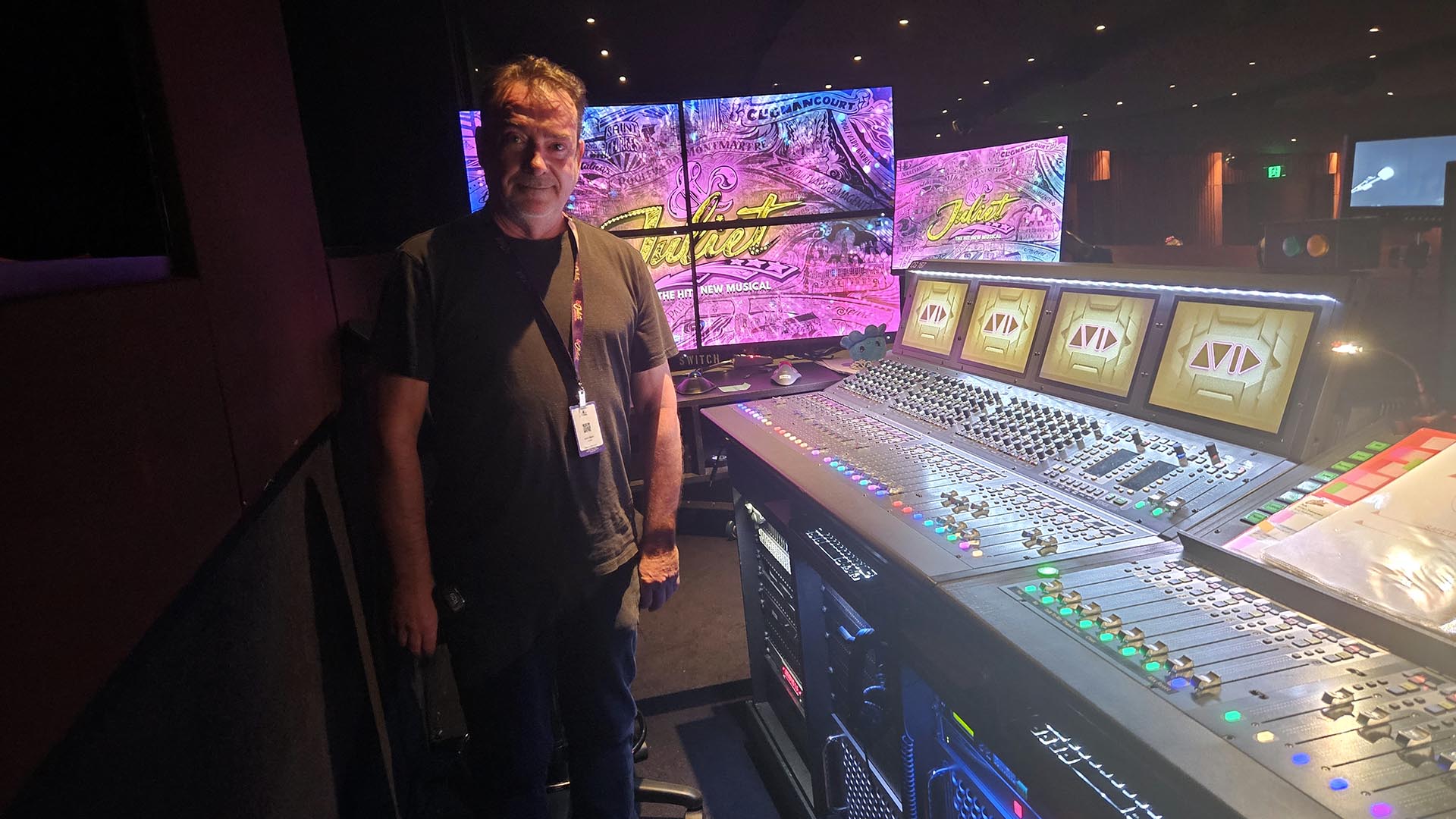After premiering on the West End and earning 8 x Olivier Awards nominations, & JULIET has also been one of the most unexpected theatrical triumphs on Broadway.
Currently playing at Sydney’s Lyric Theatre, the audio is designed by Gareth Owen with Julian Spink as Australian Associate.
“Having worked on a previous Gareth Owen-designed show (Come from Away) I was asked to help as an Australian Associate, assisting in the initial Melbourne mounting of the show with Matt Peploe (UK Associate) and consequent transfers of the show to Singapore, Perth and Sydney,” explained Julian.

The PA system is exclusively d&b audiotechnik with Julian commenting that using a sound system where every speaker box and amplifier has been voiced by the same manufacturer makes for a smooth, cohesive sounding result and is a quicker process to tune.
Gareth Owen has an ongoing and close relationship with d&b audiotechnik, having specified and used their speakers, amplifiers and control systems for his designs that have won him many industry awards over the last ten years.
“And … I’m not paid to say this, mind you … d&b make great sounding boxes and the software has an excellent workflow,” added Julian. “Originally the main system was specified using KSL, although for this tour J-Series was settled on due to budget and supply constraints. That being said, the J-Series is a fantastic sounding box and can take us to concert sound levels with ease. Since the tour venues were on the larger size there’s been no problem fitting the boxes into any of the venues.”
The main left/right (upper and lower) proscenium arrays hangs comprise a total of 24 x J-Series
(22 x J-8’s and 2 x J-12). These are joined by a truss flown spaced-array of 4 x J-Subs and 6 x Y8s as centre fill.

“We bumped up to 7 x Y8s in Sydney to assist in the truss positioning and rigging,” said Julian. “Our touring upper circle gallery arrays are redeployed to help reach under the Sydney Lyric’s stalls loges, which shroud the main arrays. We normally tour 13 x Y8 in all.”
A further 4 x J-Subs are used, two on the proscenium sides, the others used for delay. Two INFRA Subs on the proscenium deliver the goods from 60Hz down. Four V-Subs as fill delay subs, two in the grand circle, and two at the rear of stalls.
Delay speakers for the Lyric are five rings of E8 for a total of 52 boxes with two rings in stalls, two rings in the circle and one in the upper circle. Fill speakers are 4 x E6 and 2 x Q7. Surround speakers are 30 x E6 and 2 x E8.
The rig is powered by 38 x D80 4-channel amplifiers including a cold spare.

“Control is an integrated system that is part of the d&b workflow; Arraycalc software for design and R1 software for control,” revealed Julian. “The method used by d&b uses DSP located in the amplifiers to time align, and EQ the system. The amplifiers are in turn controlled by d&b R1 software using AES70 OCA protocol. The software also includes Arraycalc which helps in modelling, planning and preparation for each venue.”
The console used is an Avid S6L-32D with an extra custom theatre control surface plus an extra 16 Avid faders for DCA use and extra control buttons for Main/Backup radio mic change-over and cue transport control, space for the script and screen with QLab show control.
According to Julian, the choice of console over other brands is based on Avid’s sound quality and the tight integration with audio plug-ins and Protools for virtual soundcheck. The console hosts factory and third-party plugins, as well as a redundant Ableton system (at FOH) for reverbs, pitch, level riding and filtering effects.
The console scene automation is controlled from QLab using a workflow method used on all of Gareth’s shows whereby the console has separate scoping of vocal and band channels.
Julian says that he saw his role as keeping the sound of the show intact and making sure the local producers were happy. Making sure the show sounds as full and as exciting in different venues requires an appreciation of how a touring system can best integrate with each venue’s quirks.

“Every venue has hurdles and the Lyric’s hurdles are the low loges either side of the theatre that shroud the main arrays and the steep rake of the seating which means in the back of each level, there’s often no direct proscenium speaker reaching the audience’s ears – hence the need for comprehensive delay speaker coverage,” Julian added.
The Juliet balcony lift pushes forward of the proscenium makes loop-gain a little tricky – even with a hand-held mic. There’s quite a bit of care put into the central fill speaker placement so concert levels can still be achieved.
All principals are mic’ed using DPA 4066 booms with Countryman B6 backup mics bound to the boom. The transmitters are 34 x Shure ADX1-M micro transmitters and there are 8 x Shure ADX2 Axient handhelds. Drums are mic’ed with a mix of Audix, DPA, AKG and Shure mics and all skins employ triggers to open the mix console gates.
Apart from the strings which are mic’ed with DPA4099, most else is hi-level DI boxes (Guitars, Bass/Bass-synth, SPD drum pads) and direct Dante inputs from a pit-based Ableton playback/click/timecode system.
“I’d like to say a great thankyou to Andrew Poppleton for continued PSE support from start to finish, and to our Australian crew – Anusha (Switch) Matthews, Hayley Thor and Fiona Lloyd Harding who have all given 1000% to making this show continue to sound as great as when it first opened in Melbourne,” concluded Julian.
Julian currently has a design for Chicago (XRoads Australian Tour) that he’s doing the transfers for – this is also a d&b system using Y8 arrays and V7P and Y7P Point source as a spacialised system using the console’s delay matrix.
JPJ supplied the audio.





















































